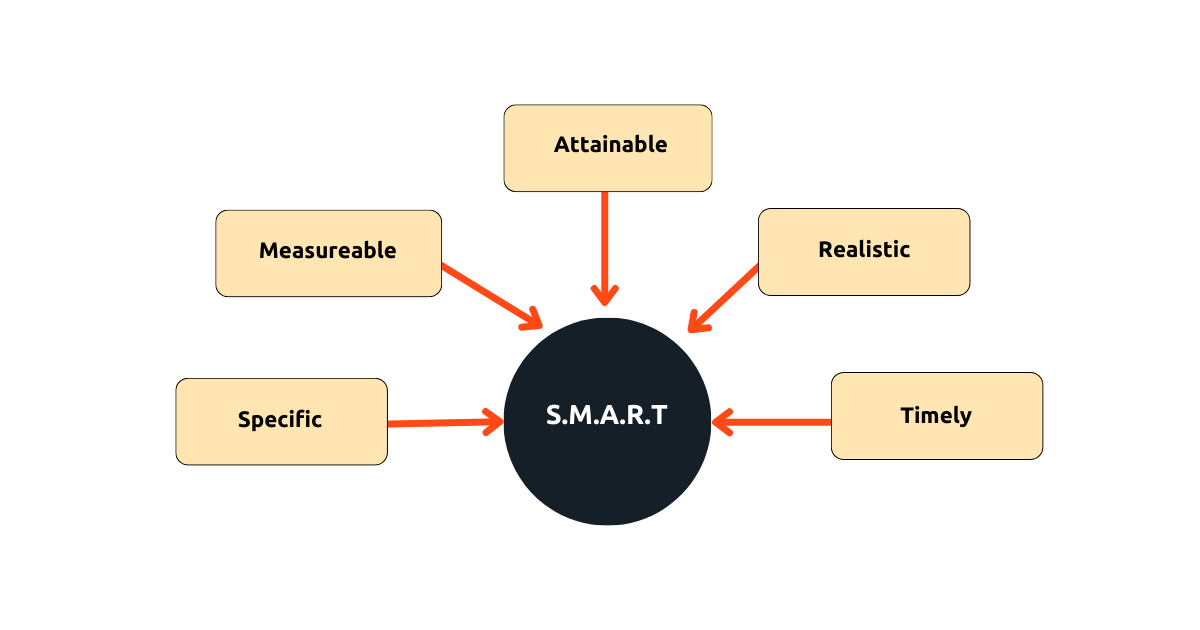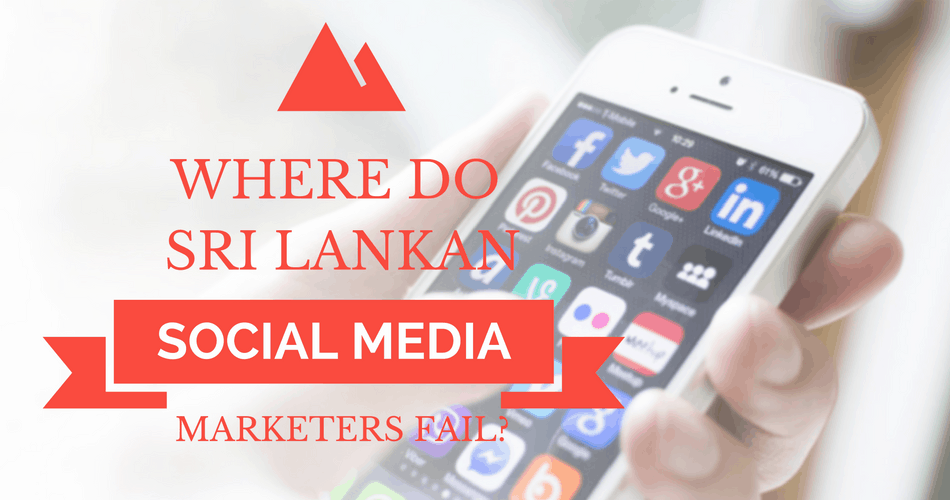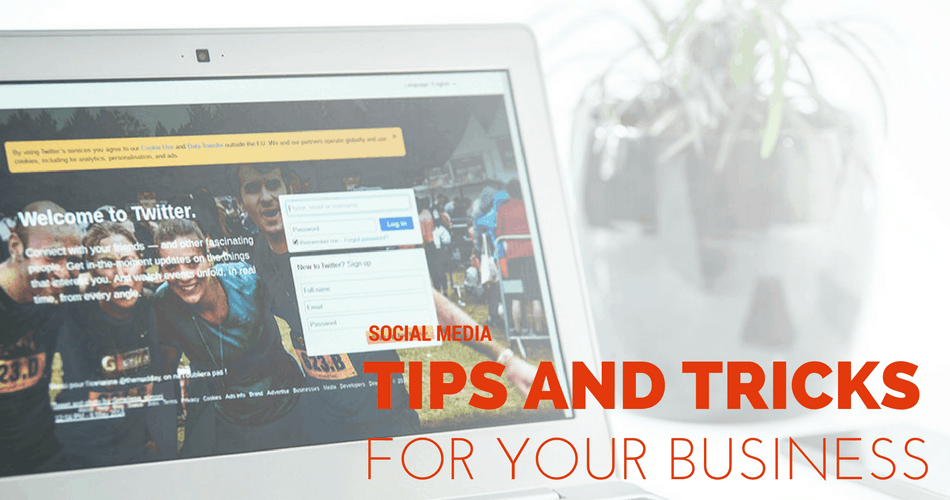Mastering The 7 C’s of Social Media Marketing – A Comprehensive Guide
In today’s digital age, social media has become an essential tool for businesses to connect with their audience, build brand awareness, and drive sales. However, navigating the ever-changing landscape of social media marketing can be daunting without a solid strategy in place. That’s where the 7 C’s of social media marketing come into play. These seven principles serve as a roadmap to help businesses effectively leverage social media platforms to achieve their marketing goals.
Let’s delve into each of the 7 C’s and explore how they can be applied to your social media marketing strategy.
The 7 C’s of Social Media Marketing
- Content
- Context
- Consistency
- Conversation
- Community
- Conversion
- Curation
1. Content
Content is the cornerstone of any successful social media marketing campaign. It encompasses everything from blog posts and articles to images, videos, and infographics. The key is to create content that resonates with your target audience and provides value. This could mean sharing informative articles, entertaining videos, or behind-the-scenes glimpses into your business. By consistently delivering high-quality content, you can establish your brand as a trusted authority in your industry and keep your audience engaged and coming back for more.
To effectively apply content to your social media marketing strategy, consider the following:
- Understand Your Audience: Research your target audience to understand their preferences, interests, and pain points. Tailor your content to address their needs and provide value.
- Create High-Quality Content: Invest in creating compelling and visually appealing content that captures the attention of your audience. Use storytelling techniques, vibrant visuals, and engaging formats to stand out in crowded social media feeds.
- Maintain Consistency: Consistency is crucial for building brand recognition and maintaining audience engagement. Develop a content calendar and post regularly to keep your audience informed and interested in your brand.
- Optimize for Each Platform: Different social media platforms have unique features and audience demographics. Customize your content to fit the requirements and preferences of each platform to maximize its effectiveness.
- Encourage Interaction: Foster two-way communication with your audience by encouraging likes, comments, shares, and direct messages. Respond promptly to comments and messages to build rapport and strengthen relationships with your audience.
- Monitor Performance: Use analytics tools to track the performance of your content. Monitor metrics such as engagement, reach, clicks, and conversions to identify what content resonates most with your audience and optimize your strategy accordingly.
- Stay Relevant and Trending: Keep an eye on industry trends, current events, and popular topics relevant to your audience. Incorporate timely content into your strategy to demonstrate your brand’s relevance and stay ahead of the competition.
By prioritizing high-quality, relevant content in your social media marketing strategy, you can effectively engage your audience, build brand awareness, and drive meaningful interactions that ultimately lead to business growth and success.
2. Context
Understanding the context in which your audience consumes content on social media is crucial. Each platform has its own unique audience demographics, user behavior, and content formats. For example, LinkedIn is primarily used for professional networking and B2B marketing, while Instagram is more visual and geared towards lifestyle and fashion. Tailor your content to fit the specific context of each platform to maximize its effectiveness. This may involve adapting your messaging, tone, and content format to better resonate with your audience on each platform.
Here’s how you can apply context to your strategy:
- Know Your Audience: Understand the demographics, interests, and behaviors of your target audience. This knowledge helps you create content that resonates with them and aligns with their context.
- Understand Platform Dynamics: Different social media platforms have unique features, algorithms, and user behaviours. Tailor your content to fit the context of each platform to maximize its effectiveness. For example, Instagram is more visual-centric, while Twitter is known for its real-time updates and conversations.
- Timing is Key: Pay attention to when your audience is most active on social media. Posting your content at optimal times ensures that it reaches your audience when they’re most likely to engage with it.
- Relevance is Paramount: Ensure that your content is relevant to your audience’s interests, current events, and trends. By staying attuned to what’s happening in your industry and the world, you can create content that resonates with your audience’s context.
- Personalization: Tailor your messaging to the individual preferences and behaviours of your audience segments. Personalized content that speaks directly to the needs and interests of your audience enhances the relevance and effectiveness of your social media marketing efforts.
- Listen and Respond: Monitor conversations and feedback related to your brand or industry on social media. Engage with your audience by responding to comments, addressing concerns, and participating in relevant discussions. This demonstrates that you understand the context in which your audience operates and value their input.
- Stay Authentic: Authenticity is key to building trust and credibility with your audience. Ensure that your content and messaging reflect your brand’s values, voice, and personality, aligning with the context of your audience’s expectations.
By considering the context in which your audience interacts with your content, you can create more relevant, engaging, and effective social media marketing campaigns that resonate with your audience and drive meaningful results.
3. Consistency
Consistency is key to maintaining a strong presence on social media. Posting regularly helps keep your brand top of mind and ensures that your audience stays engaged with your content. Create a content calendar to plan out your posts in advance and maintain a consistent posting schedule. This could mean posting once a day, three times a week, or whatever frequency works best for your audience and resources. Additionally, consistency extends beyond just posting frequency—it also applies to the quality and tone of your content. Aim to maintain a consistent brand voice and aesthetic across all your social media channels to reinforce your brand identity.
Applying consistency to your social media marketing strategy involves establishing a predictable rhythm of posting, maintaining brand coherence, and delivering a reliable experience for your audience. Here’s how consistency can be applied:
- Posting Schedule: Develop a consistent posting schedule that aligns with your audience’s preferences and behaviours. Whether it’s daily, weekly, or multiple times a day, maintaining a regular cadence ensures that your audience knows when to expect new content from your brand.
- Brand Voice and Visuals: Maintain consistency in your brand’s voice, tone, and visual identity across all social media platforms. This includes using consistent language, imagery, colours, and design elements that reinforce your brand’s personality and values.
- Content Themes and Topics: Establish consistent themes and topics for your content that resonate with your audience and align with your brand’s messaging and objectives. This helps reinforce your brand’s identity and expertise in specific areas while providing value to your audience.
- Engagement and Interaction: Be consistently responsive and engaged with your audience by promptly addressing comments, messages, and mentions. Regularly interact with your audience through likes, shares, and comments to foster meaningful connections and build relationships.
- Branding Elements: Incorporate consistent branding elements such as logos, hashtags, and slogans into your social media posts and profiles. This reinforces brand recognition and ensures that your content is easily identifiable as belonging to your brand.
- Quality Standards: Maintain consistent quality standards for your content to uphold your brand’s reputation and credibility. Whether it’s imagery, video production, or written content, strive for excellence in every aspect of your social media presence.
- Monitoring and Optimization: Continuously monitor the performance of your social media efforts and optimize your strategy based on insights and feedback. Consistently tracking metrics such as engagement, reach, and conversions allows you to refine your approach and ensure ongoing success.
By prioritizing consistency in your social media marketing strategy, you can build trust, strengthen brand identity, and cultivate a loyal audience that consistently engages with your content. Consistency reinforces your brand’s presence in the minds of your audience, ultimately driving long-term growth and success.
4. Conversation
Social media is inherently social, so it’s essential to foster two-way communication with your audience. Encourage dialogue by asking questions, responding to comments, and actively engaging with your followers. This not only helps build stronger relationships with your audience but also provides valuable insights into their needs, preferences, and pain points. Use social listening tools to monitor conversations around your brand and industry and join in on relevant discussions. By actively participating in conversations on social media, you can humanize your brand and establish a deeper connection with your audience.
Incorporating conversation into your social media marketing strategy involves actively listening to your audience, encouraging dialogue, and responding thoughtfully to their comments, questions, and feedback. Here’s how conversation can be applied:
- Listen Actively: Monitor social media platforms to stay informed about conversations related to your brand, industry, or relevant topics. Actively listen to your audience’s opinions, concerns, and interests to gain insights into their preferences and sentiments.
- Encourage Engagement: Promptly respond to comments, messages, and mentions from your audience to demonstrate that you value their input and are attentive to their needs. Encourage engagement by asking questions, soliciting feedback, and inviting users to share their experiences.
- Authentic Interactions: Engage with your audience authentically by adopting a conversational tone and voice in your communications. Avoid overly promotional language and focus on building genuine connections with your audience based on mutual interests and values.
- Provide Value: Offer valuable insights, information, or assistance to your audience through your conversations. Share helpful resources, answer questions, and provide solutions to address their needs, positioning your brand as a trusted authority in your industry.
- Facilitate Community: Create opportunities for your audience to connect with each other and participate in discussions related to your brand or industry. Foster a sense of community by hosting live chats, Twitter chats, or Facebook groups where users can engage with each other and with your brand.
- Feedback Loop: Use conversations with your audience as a feedback mechanism to inform your social media strategy and improve your products or services. Pay attention to recurring themes or issues raised by your audience and take action to address them effectively.
- Empower Advocates: Identify and nurture brand advocates within your audience who actively engage with your content and promote your brand to others. Acknowledge and appreciate their support, and empower them to become ambassadors for your brand through exclusive offers or opportunities.
By prioritizing conversation in your social media marketing strategy, you can foster stronger relationships with your audience, increase brand loyalty, and drive meaningful engagement that ultimately leads to business growth and success.
5. Community
Building a sense of community around your brand is a powerful way to foster loyalty and advocacy among your audience. Encourage user-generated content by reposting customer photos and testimonials, hosting contests and giveaways, and creating branded hashtags for your followers to use. By involving your audience in the creation and sharing of content, you can turn them into brand ambassadors who help spread the word about your products and services. Additionally, creating exclusive groups or communities on platforms like Facebook or LinkedIn can provide a space for your most loyal customers to connect with each other and with your brand.
Incorporating community into your social media marketing strategy involves building relationships, fostering collaboration, and providing a platform for your audience to connect with each other and with your brand. Here’s how the community can be applied:
- Create a Sense of Belonging: Develop a welcoming and inclusive environment where your audience feels valued, respected, and connected. Encourage participation and collaboration among community members to foster a sense of belonging and camaraderie.
- Facilitate Interaction: Provide opportunities for your audience to engage with each other and with your brand through discussions, forums, and user-generated content. Encourage the sharing of ideas, experiences, and insights to strengthen the community bond.
- Acknowledge and Appreciate: Recognize and appreciate the contributions of community members by highlighting their achievements, featuring user-generated content, or hosting user spotlight interviews. This reinforces a sense of belonging and encourages continued participation.
- Provide Value: Offer valuable resources, information, or exclusive benefits to your community members as a reward for their engagement and loyalty. This could include access to premium content, early product launches, or special discounts.
- Listen and Respond: Actively listen to the needs, concerns, and feedback of your community members and respond promptly and thoughtfully. Addressing their queries or resolving their issues demonstrates that you value their input and are committed to their satisfaction.
- Encourage Advocacy: Empower your community members to become advocates for your brand by providing them with the tools and resources to share their positive experiences with others. Encourage user-generated content, reviews, and referrals to amplify your brand’s reach and impact.
- Promote Collaboration: Foster collaboration and co-creation among community members by organizing collaborative projects, contests, or challenges. This not only encourages engagement but also strengthens the bonds within the community and promotes a sense of ownership.
By prioritizing community building in your social media marketing strategy, you can create a loyal and engaged audience that actively supports your brand, advocates on your behalf, and contributes to your long-term success. A thriving community not only enhances brand loyalty but also serves as a valuable asset for driving brand awareness, growth, and innovation.
6. Conversion
Ultimately, the goal of social media marketing is to drive conversions—whether that’s in the form of website visits, leads, or sales. To maximize your conversion rate, it’s essential to optimize your social media profiles and content for your desired outcome. Include clear calls-to-action (CTAs) in your posts and bio sections, such as “Shop Now,” “Sign Up,” or “Learn More,” to prompt users to take the next step. Use trackable links and analytics tools to monitor the performance of your social media campaigns and identify areas for improvement. By continuously refining your approach based on data and insights, you can optimize your conversion rate and maximize the return on your social media investment.
Applying conversion to your social media marketing strategy involves guiding your audience through the customer journey, from awareness to action, and optimizing your content and messaging to drive desired outcomes. Here’s how conversion can be applied:
Applying conversion to your social media marketing strategy involves guiding your audience through the customer journey, from awareness to action, and optimizing your content and messaging to drive desired outcomes. Here’s how conversion can be applied:
- Clear Call-to-Actions (CTAs): Incorporate clear and compelling CTAs in your social media posts, encouraging your audience to take specific actions such as visiting your website, making a purchase, or subscribing to your newsletter. Use action-oriented language and visually prominent buttons to attract attention and prompt engagement.
- Landing Pages Optimization: Ensure that the landing pages linked to your social media posts are optimized for conversion. Design them to be visually appealing, user-friendly, and aligned with the messaging and offers promoted on social media. Minimize distractions and streamline the conversion process to increase the likelihood of action.
- Offer Value Propositions: Clearly communicate the value proposition of your products or services in your social media content. Highlight the benefits, features, and unique selling points that differentiate your offerings and compel your audience to take action.
- Social Proof and Testimonials: Leverage social proof and testimonials to build credibility and trust with your audience. Showcase customer reviews, testimonials, case studies, or user-generated content that demonstrates the positive experiences of others and validates your brand’s claims.
- Targeted Advertising: Use targeted advertising on social media platforms to reach specific segments of your audience with tailored messaging and offers. Segment your audience based on demographics, interests, or behaviours to deliver personalized content that resonates with their needs and preferences.
- Retargeting Campaigns: Implement retargeting campaigns to re-engage users who have previously interacted with your brand on social media or visited your website. Serve them personalized ads or offers based on their past behaviour to encourage them to complete a desired action.
- Analytics and Optimization: Monitor key performance metrics such as click-through rates, conversion rates, and return on investment (ROI) to track the effectiveness of your social media campaigns. Use data-driven insights to identify areas for improvement and optimize your strategy to maximize conversion outcomes.
By strategically incorporating conversion tactics into your social media marketing strategy, you can effectively drive desired actions from your audience, generate leads, and ultimately, achieve your business objectives. Conversion-focused strategies help you capitalize on the engagement and interactions fostered on social media platforms, turning them into meaningful outcomes that contribute to your bottom line.
7. Curation
In addition to creating original content, curating relevant content from other sources can help enrich your social media presence and provide additional value to your audience. Share articles, videos, and other resources from industry influencers, thought leaders, and reputable publications to showcase your expertise and stay up-to-date with the latest trends and developments in your industry. Just be sure to give proper credit to the original creators and add your own insights or commentary to provide context for why you’re sharing the content. Curating content not only saves you time and resources but also demonstrates your commitment to providing valuable information to your audience.
Curation involves selecting and sharing relevant and high-quality content from external sources to supplement your own original content. Here’s how it can be applied to your social media marketing strategy:
- Diversify Content: Curation allows you to diversify your content mix by incorporating content from a variety of sources such as industry publications, thought leaders, or reputable websites. This enriches your social media feed and provides your audience with a broader range of insights and perspectives.
- Position Yourself as a Resource: By curating valuable content from trusted sources, you position yourself as a knowledgeable and trustworthy resource within your industry or niche. Your audience will appreciate the valuable information you provide, even if it’s not directly from your own brand.
- Engage Your Audience: Curated content can spark conversations and interactions with your audience. When sharing curated content, add your own commentary or questions to encourage engagement and discussion among your followers.
- Save Time and Resources: Curating content allows you to leverage existing resources and expertise without the need to create everything from scratch. This can save time and resources while still providing valuable content to your audience.
- Build Relationships: When you curate content from other creators or brands, you have the opportunity to build relationships and collaborations within your industry. Tagging or mentioning the original creators when sharing their content can help foster connections and potential partnerships.
- Stay Current and Relevant: Social media moves quickly, and it can be challenging to keep up with the latest trends and news. Curating content allows you to stay current and relevant by sharing timely and topical information with your audience.
- Maintain Consistency: While curation involves sharing content from external sources, it still contributes to the consistency of your social media presence. By curating content that aligns with your brand’s values and interests, you reinforce your brand identity and messaging.
Overall, curation is a valuable strategy for enhancing your social media marketing efforts by providing valuable content, engaging your audience, and building relationships within your industry. By incorporating curated content alongside your original content, you can create a well-rounded and engaging social media presence.
Conclusion!!!
Mastering the 7 C’s of social media marketing can help businesses effectively navigate the complex world of social media and achieve their marketing objectives. By focusing on creating high-quality content, engaging with your audience, and providing value at every touchpoint, you can build a strong and loyal following on social media and drive meaningful results for your business.
So, roll up your sleeves, integrate these 7 C’s principles into your social media marketing strategy, and watch your brand thrive in the digital landscape!




























